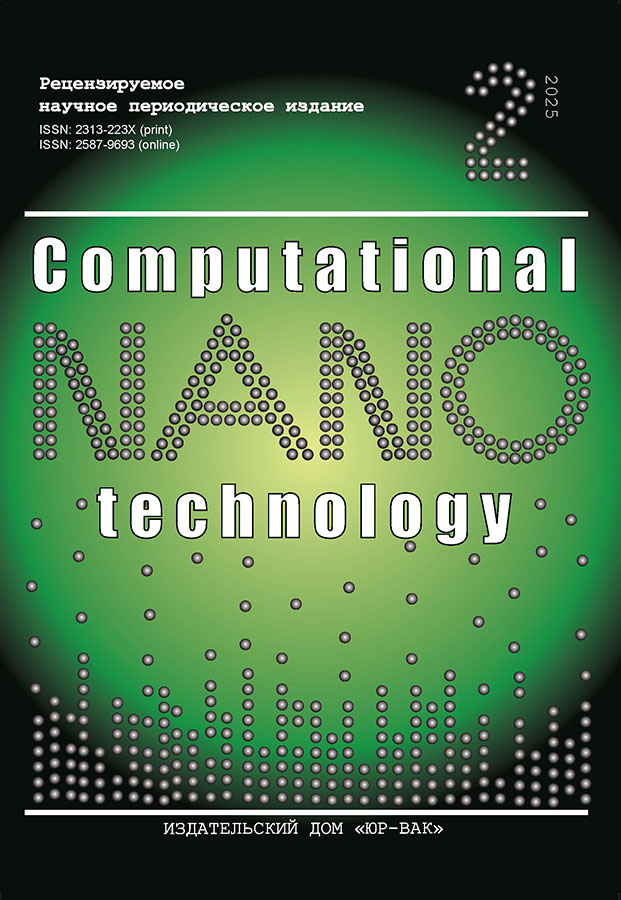Methods of computational optimization for automated insulin therapy control
- Authors: Pozhar K.V.1, Chuprakov D.A.1
-
Affiliations:
- National Research University of Electronic Technology (MIET)
- Issue: Vol 12, No 2 (2025)
- Pages: 48-57
- Section: SYSTEM ANALYSIS, INFORMATION MANAGEMENT AND PROCESSING, STATISTICS
- URL: https://journals.eco-vector.com/2313-223X/article/view/689154
- DOI: https://doi.org/10.33693/2313-223X-2025-12-2-48-57
- EDN: https://elibrary.ru/QHWPUO
- ID: 689154
Cite item
Abstract
The control automation of insulin-dosing technical systems for patients with type 1 diabetes mellitus is an urgent task of biomedical engineering. The development of computing technologies allows using complex nonlinear predictive models for calculating optimal control actions. The use of such models makes it necessary to develop efficient methods for numerically solving stiff systems of nonlinear ordinary differential equations, developing efficient methods for parametric identification of mathematical models and developing efficient methods for optimizing control actions. The paper presents a set of studies and numerical experiments aimed at formalizing computational problems, identifying known methods and algorithms for solving the problems and experimentally evaluating the efficiency of selected methods and algorithms. It is demonstrated that the LSODA algorithm is efficient in numerically solving the model equations, using the Adams method when in nonstiff areas and the backward differentiation formula on stiff areas. A method for optimizing parametric identification is proposed by using the «basin hopping» global optimization method with a Nelder–Mead local minimizer. For solving the problem of multidimensional conditional optimization of control actions, the COBYLA method has shown the highest efficiency, ensuring the finding of optimal parameters on household computers in an acceptable time.
Keywords
Full Text
About the authors
Kirill V. Pozhar
National Research University of Electronic Technology (MIET)
Author for correspondence.
Email: pozhar@bms.zone
ORCID iD: 0000-0001-9879-0220
SPIN-code: 6609-8070
Cand. Sci. (Eng.), Associate Professor; associate professor, Institute of Biomedical Systems
Russian Federation, Zelenograd, MoscowDmitry A. Chuprakov
National Research University of Electronic Technology (MIET)
Email: 89120209984d@gmail.com
ORCID iD: 0009-0002-9384-2049
SPIN-code: 2753-4276
lab assistant, Laboratory of Systems of Artificial Biomedical Regulation, Institute of Biomedical Systems
Russian Federation, Zelenograd, MoscowReferences
- Laptev D.N. Continuous glucose monitoring in patients with type 1 diabetes mellitus. A teaching aid for doctors and nurses to conduct “Schools for patients with diabetes mellitus”. Moscow: National Medical Research Center of Endocrinology, 2023. 60 p.
- Strukova E.I., Pozhar K.V., Chuprakov D.A. Development of a mathematical model of glucose metabolism in type 1 diabetes mellitus based on enzymatic kinetics equations. Moscow: Meditsinskaya Tekhnika. 2025. (In press)
- Bonet-Monroig X. et al. Performance comparison of optimization methods on variational quantum algorithms. Physical Review A. 2023. Vol. 107. No. 3. P. 032407.
- Chuprakov D.A., Pozhar K.V. Analysis of methods for calculating optimal parameters for insulin boluses in automated insulin therapy systems with control based on predictive models. Biomedical Engineering. 2023. Vol. 57. No. 2. Pp. 102–106.
- Dalla Man C., Camilleri M., Cobelli C. A system model of oral glucose absorption: validation on gold standard data. IEEE Transactions on Biomedical Engineering. 2006. Vol. 53. No. 12. Pp. 2472–2478.
- Dalla Man C., Rizza R.A., Cobelli C. Meal simulation model of the glucose-insulin system. IEEE Transactions on Biomedical Engineering. 2007. Vol. 54. No. 10. Pp. 1740–1749.
- Dalla Man C. et al. The UVA/PADOVA type 1 diabetes simulator: New features. Journal of Diabetes Science and Technology. 2014. Vol. 8. No. 1. Pp. 26–34.
- Farman M. et al. Stability analysis and control of the glucose insulin glucagon system in humans. Chinese Journal of Physics. 2018. Vol. 56. No. 4. Pp. 1362–1369.
- Hairer E., Wanner G. Stiff differential equations solved by Radau methods. Journal of Computational and Applied Mathematics. 1999. Vol. 111. No. 1–2. Pp. 93–111.
- Hindmarsh A.C., Petzold L.R. LSODA, ordinary differential equation solver for stiff or non-stiff system. 2005.
- Home P.D., Mehta R. Insulin therapy development beyond 100 years. The Lancet Diabetes & Endocrinology. 2021. Vol. 9. No. 10. Pp. 695–707.
- Home P.D. An overview of insulin therapy for the non‐specialist. In: Diabetes, obesity and metabolism. 2025.
- Jones D.R. Direct global optimization algorithm. In: Encyclopedia of optimization. 2001. Pp. 431–440.
- Kovatchev B. Automated closed-loop control of diabetes: The artificial pancreas. Bioelectronic Medicine. 2018. Vol. 4. No. 1. P. 14.
- Litinskaia E.L., Pozhar K.V., Zhilo N.M. Problems and methods of a closed-loop blood glucose control system construction. Journal of Physics. Conference Series. IOP Publishing. 2021. Vol. 2091. No. 1. P. 012020.
- Lu L. et al. A fast parametric modelling algorithm with the Powell method. Physiological Measurement. 1995. Vol. 16. No. 3A. P. A39.
- Miháliková I. et al. Best-practice aspects of quantum-computer calculations: A case study of the hydrogen molecule. Molecules. 2022. Vol. 27. No. 3. P. 597.
- Pozhar K.V., Bazaev N.A., Litinskaia E.L. In silico testing of a control algorithm for a personalized insulin therapy system. In: IEEE conference of Russian young researchers in electrical and electronic engineering (ElConRus). IEEE, 2021. Pp. 2842–2846.
- Thomas A., Heinemann L. Algorithms for automated insulin delivery: an overview. Journal of Diabetes Science and Technology. 2022. Vol. 16. No. 5. Pp. 1228–1238.
- Vettoretti M., Facchinetti A. Combining continuous glucose monitoring and insulin pumps to automatically tune the basal insulin infusion in diabetes therapy: A review. Biomedical Engineering Online. 2019. Vol. 18. No. 1. P. 37.
- Wales D.J., Doye J.P.K. Global optimization by basin-hopping and the lowest energy structures of Lennard–Jones clusters containing up to 110 atoms. The Journal of Physical Chemistry A. 1997. Vol. 101. No. 28. Pp. 5111–5116.
Supplementary files











